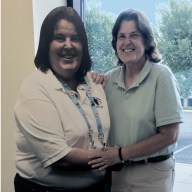Exploring our natural history through its greatest ecosystem

Driving down West Shore Road, a daily trip for some of us, an unseen world passes on either side of the road, just beyond the trees. Though few people know it, arguably earth’s most important and today’s most endangered ecosystem dwells on our little peninsula. Wetlands exist among us, even though 90 percent of Port Washington is developed land. These wetlands, or salt marshes, exist primarily at Hempstead Harbor, Half Moon Beach, Prospect Point and Sheets Creek. Vital to our existence as well as to the abundance of organisms in these areas, the wetlands are an important habitat and breeding ground for aquatic organisms and migrating birds, and as an area for natural filtration and flood control, which keep the whole peninsula healthy. From Long Island’s beginnings through today, these areas have experienced drastic changes.
Once upon a time, when dinosaurs roamed the earth, our home was a tropical oasis, something evidenced in fossils from the Cretaceous period found in eastern Port Washington. But the earth then froze, becoming dominated by glaciers.
The glaciers appeared from the north, crawling downwards and engulfing this area. These glaciers are responsible for Long Island’s distinctive rocky north shore and sandy south shore, protected by barrier beaches. Twice the glaciers covered the New York area and then retreated, creating the sand that ties Port Washington to the skyscrapers of Manhattan. The glaciers ravaged the landscape as they moved, tearing down entire mountaintops and creating sediment that would be deposited here. In fact, it’s possible that Port Washington sand originated as granite in northern mountains.

Though they are a distant memory for the developed land on which we live, the glaciers are vital to our story. They are the reason for the existence of Long Island’s waterfront views, beaches, and sunsets over the city to the west.
After the final departure of the glaciers, Long Island once again grew wild with miles of wetlands.
Eventually, humans settled the land and Native Americans thrived on the natural haven they had found. Long before George Washington was even born, Port Washington was dubbed “Sintsink,” meaning “place of many stones,” by the Matinecock Indians. The Algonquin Matinecocks used Manhasset Bay for fishing and shellfishing for thousands of years and, in a different era, the Miracle Mile was not a strip of high-end stores but a fishing village for the Matinecocks. The tribes lived peacefully, side-by-side, with wetland inhabitants, scores of which existed back then.
The land was sold in 1643 to English families from Connecticut. In 1644, the town of Cow Neck was established, as early settlers farmed and grazed their animals on the thousands of open acres. Despite settlement and a nearby city, the wetlands still existed. Things did not bode as well for the animals of this area however, particularly for beavers, as a fur obsession swept the northeast and the species was hunted to the brink of extinction.

Eventually, it was discovered that the thirst for an ever-growing city could be quenched in part by using Port Washington sand for cement buildings in New York City. Sand mining began in the 1860s and was concentrated around today’s Harbor Links golf course. It lasted for more than a century, and between 1865 and 1930 alone, 100 million tons of sand were mined and shipped via the convenient nearby waterway to Manhattan. This brought immigrants, economic growth and fame to the town, while also drastically changing the landscape.
Around 1980, the sand mining era officially ended. Since then, the salt marshes bordering each side of West Shore Road are making a comeback, as are many of Port’s other open spaces. As we work toward protecting the valuable ecosystems with which we coexist, the health and well-being of the entire peninsula and its inhabitants is improved. Port Washington is home to a vast number of different native amphibians, reptiles, fish, trees, grasses, birds and mammals. Vulnerable bird species, meaning those on the brink of endangerment, such as the piping plover, least tern and osprey, make their home on our shores, while charismatic mammals, such as red foxes, rabbits, moles, chipmunks and possibly even a beaver, enjoy the comforts the marshes provide.
Today, we can visit areas like the Hempstead Harbor Shoreline Trail and see what Port may have looked like centuries ago, when the fishing village of Sintsink and its wetland animals thrived. These areas have made an incredible comeback over the past few decades, but this has occurred through a lack of human involvement. We must actively work towards fulfilling our responsibilities of protecting the ecosystems we inhabit. This can be achieved through simple actions, such as preventing pesticides, fertilizers, litter and oil from ending up in the bay and salt marshes. Hopefully, the next time we all drive down West Shore Road, it will provoke thoughts of the valuable salt marshes hiding behind the trees.



































